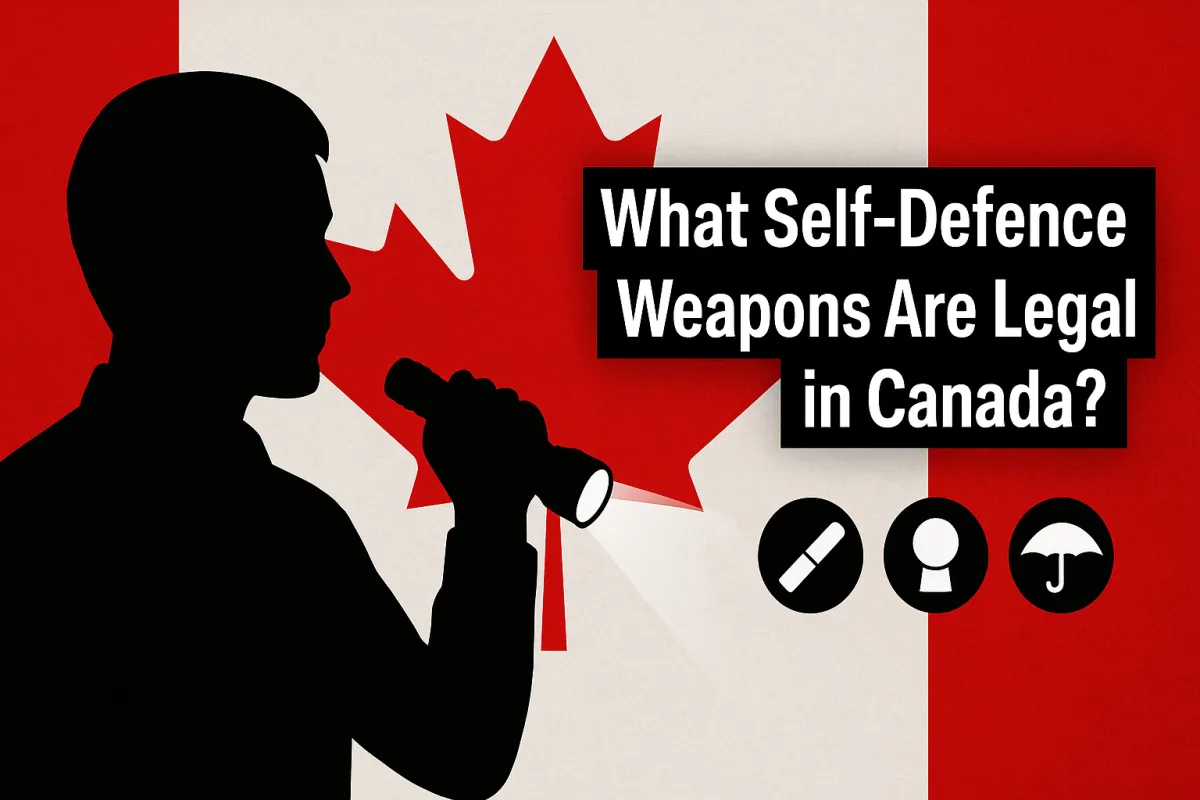
What self-defence weapons are legal in Canada?
The Fine Line Between Protection and Prohibition
Let’s face it—feeling safe in today’s world isn’t guaranteed. Whether you’re commuting late, walking your dog at night, or simply want peace of mind, it’s natural to think about carrying something for protection. But if you live in Canada, the law has a clear stance:
You cannot legally carry any weapon—lethal or non-lethal—for the express purpose of self-defence.
This might sound shocking, especially to those familiar with U.S. laws, but in Canada, self-defence is a legal defence, not a justification for carrying weapons. So what can you carry? Let’s unpack the rules, tools, and grey zones.
The Legal Backbone: Self-Defence Under Canadian Law
Canada’s Criminal Code (Section 34) permits individuals to defend themselves or others if they believe they’re under imminent threat. However, that force must be reasonable and proportional.
You’re allowed to respond—but not overreact. And crucially:
It is illegal to carry any item with the intent to use it as a weapon for self-defence.
That includes knives, tasers, pepper spray, batons, and yes—even legally owned firearms. In court, your intent, the situation, and how you used force will all be dissected. A purse with pepper spray? Could land you with criminal charges.

What’s Off the Table: Prohibited Self-Defence Weapons
Here’s what you definitely can’t carry for protection:
🔴 Pepper Spray
Legal only for animal deterrent (e.g., dog or bear spray). Using it on a human—even in self-defence—is a criminal offence.🔴 Firearms
Even with a license, you can’t carry a firearm for protection. Using one for self-defence is almost impossible to justify in court and could lead to charges like assault with a weapon or worse.🔴 Tasers, Batons, Brass Knuckles, Switchblades
These are classified as prohibited weapons across the board. Possession alone can be a crime, regardless of intent.
The Loopholes: Legal Tools That Can Help in Emergencies
While weapons are off-limits, certain multi-purpose safety tools are legal—if carried for general utility, not defence:
🟢 Bear or Dog Spray
Only legal for protection against animals. You must not carry it for human encounters.🟢 Personal Safety Alarms
Devices that emit loud noises to deter attackers and attract attention. 100% legal.🟢 Tactical Flashlights
Bright enough to disorient someone, but legally just a flashlight.🟢 Security Umbrellas
Heavy-duty umbrellas designed for bad weather—but handy in an emergency.🟢 Safety Whistles
Great for drawing attention. Legal and often recommended.🟢 Self-Defence Keychains
Legal only if they have a practical purpose (e.g., holding keys or serving as a flashlight). Anything shaped like a weapon can be flagged by police.
📝 Important note: The legality of these items depends on your intent and how they’re carried. If a safety whistle is clearly repurposed to injure, that’s a legal problem.
The Grey Zone: Byrna Launchers and “Less-Lethal” Alternatives
Enter the Byrna Launcher: a CO2-powered device that fires non-lethal pepper rounds and kinetic projectiles. Marketed as an alternative to firearms, it seems like the perfect legal middle ground. But in Canada, it’s complicated.
Legally, Byrna Launchers are not classified as firearms (due to low velocity), but...
They are still regulated, and using one against a person—even in self-defence—could land you in court.
Their legal status for carry is unclear, and their appearance alone could provoke a law enforcement response.
If you’re considering one, consult a lawyer. These tools live in a legal grey area with very real risks.
When It Hits the Fan: Using Force in Real-Life Self-Defence
Let’s be clear: You can defend yourself. If you’re attacked, the law allows you to respond.
But:
You can only use reasonable force.
Your response must match the threat level.
You must be prepared to justify your actions in court.
Using a purse, an umbrella, or a flashlight in the heat of the moment? Possibly defensible. Walking around with a concealed taser? That’s likely a criminal charge waiting to happen.
Key Takeaways (Bold and Scannable)
❌ You cannot legally carry any item specifically for self-defence in Canada.
✅ Tools like flashlights, alarms, and whistles are legal—but only if not intended as weapons.
⚖️ If you defend yourself with any item, you must prove your use was reasonable and proportional.
🚨 Misusing even legal tools (like bear spray) against people = criminal offence.
Resources & Further Reading
If you want to dive deeper, these links are solid starting points:
Costa Law Firm: Can You Carry Self Defence Weapons in Canada?
Stay Safe Vancouver: 10 Self Defense Tools You Can Legally Carry In Canada
🧠 FAQ: Quick Answers to Big Questions
Q: Can I carry bear spray in the city?
A: Technically, yes—but only for animal deterrence. If used on a person, it’s a crime.
Q: What about knives?
A: Pocket knives with no spring-assist may be legal, but if you admit it's for self-defence, it becomes illegal.
Q: Can I use a baseball bat for self-defence?
A: Only if it was on hand without intent. Carrying one as a weapon makes it a problem.

